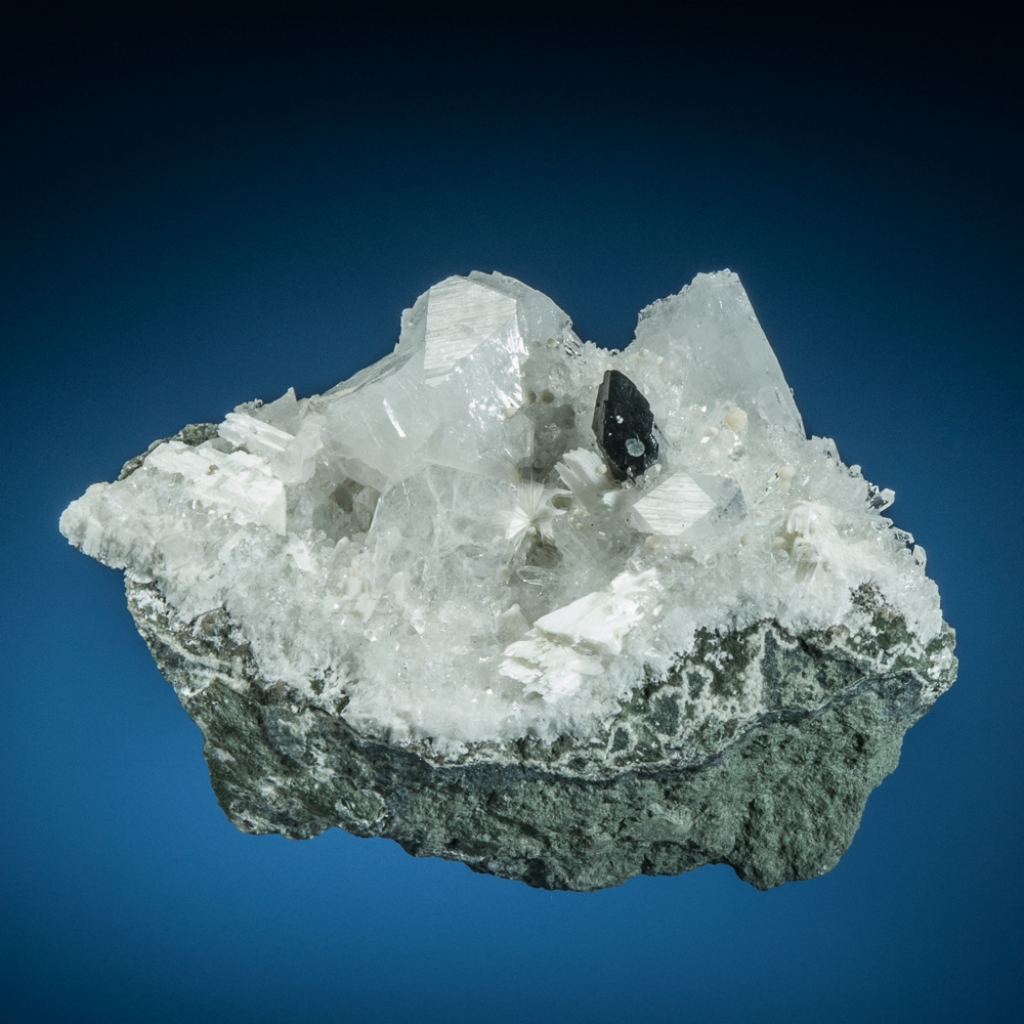Description
Detailed Description
This is a pretty amazing specimen. It hosts a 7mm babingtonite, with crystals of hydroxyapophyllite, laumontite, quartz and okenite, with crystal balls of gyrolite and prehnite. This is a top-calibre babingtonite from India – they were quite rare and small. This specimen is from the Kandivali Quarry, which closed when the city grew up around it. From the collection of Rock Currier, acquired in 1975, no. 2225, and included with his photographed specimens on mindat.org.
A babingtonite of this calibre from India is rare, but a specimen with 7 well-crystallized minerals… that is truly remarkable!
About Rock Currier’s Collection – India Specimens
Rock Currier was a remarkable person and highly influential force in the world of mineral collecting for many decades. Beginning in the early 1970s, he travelled the world in search of mineral specimens and he was a pioneering mineral dealer in many countries. He grew his mineral business while at the same time building an impressive personal mineral collection. Rock was also a manager of – and a prolific contributor to – mindat.org, sharing his knowledge and expertise with the mineral community worldwide.
After Rock had begun his company (named Jewel Tunnel Imports, after the famous British railway “Jewel Tunnel” on the route from Mumbai to Pune, cutting through the zeolite “jewel” pockets), he travelled to India for mineral specimens. Over the years, he acquired and sold large volumes of Indian specimens, and he kept a few for his collection along the way.
Rock’s first trip to India was in 1972. The specimens in this update are just a few from Rock’s personal India collection and most date to the early years of his dealing in Indian minerals. Rock was a conscientious keeper of labels and information, such that all of his collection specimens were labeled with as much information as he had about them and they all bear catalogue numbers. Many also include a tiny label with the information affixed right to the specimen. Rock also wrote additionally about each specimen, and many typed specimen labels include this information.


